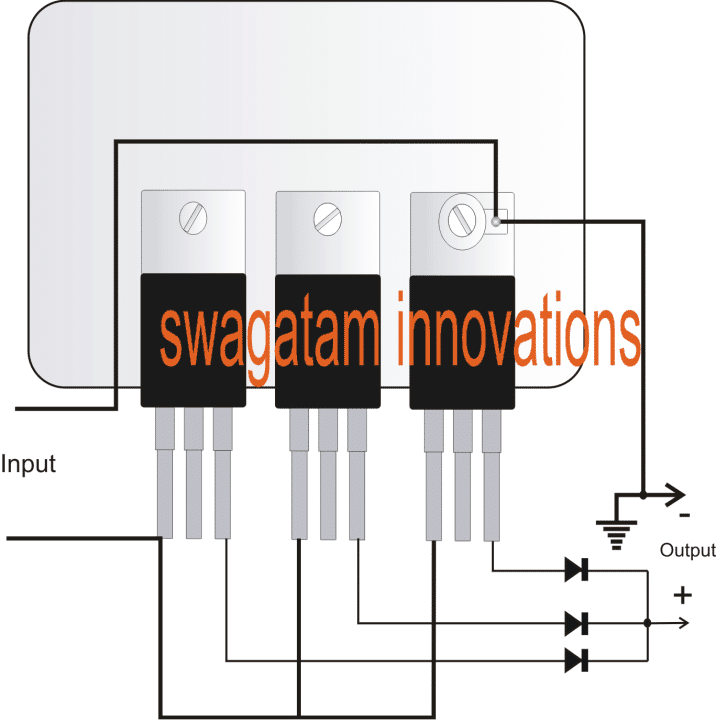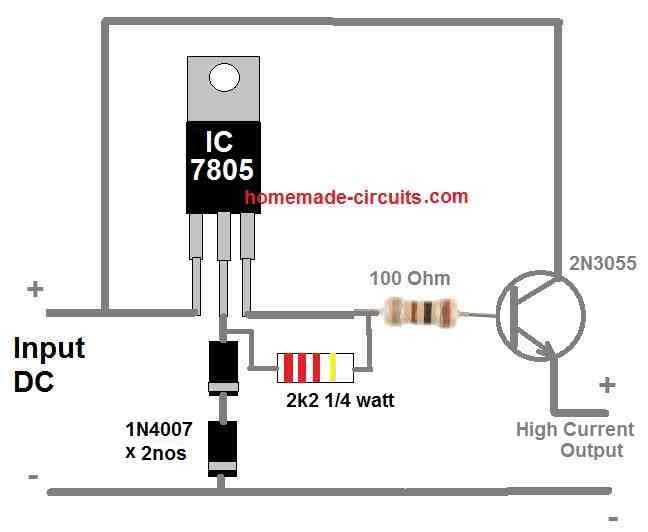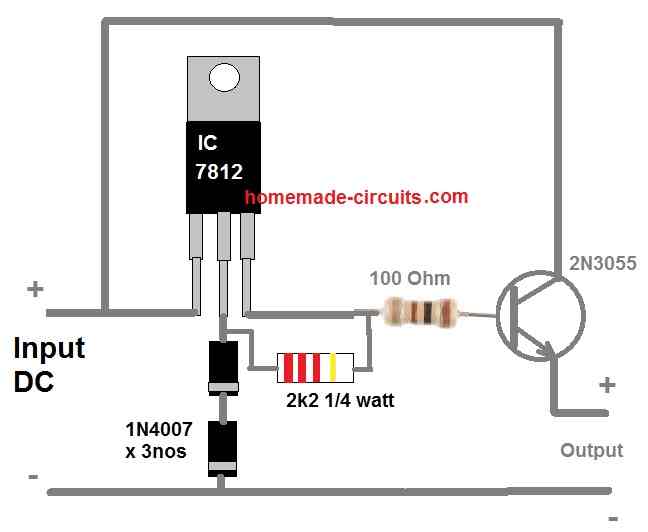In this post we investigate how to connect popular voltage regulator ICs such as 7812, 7805 in parallel for acquiring high current output from the ICs.
Voltage regulator chips mostly have their maximum current output specs fixed to some predetermined levels. Increasing them to a higher level would normally call for external out board transistors and complicated associated circuitry which might be difficult to configure for the new hobbyists. Connecting a few of them in parallel, possibly solves the problem.
The idea was requested by Mr.Raja.
Technical Specifications
Sir,
could i use three L 7815 voltage regulator ic in parallel, to get 15 volt 4 amps dc current from about 20 volt 5 amp dc source?
Sir, as LM 338 and their equivalent ic s ( which gives 5 amps ) are not available in my town. I planned to use three 7815 in parallel. Is my idea works? If so please help me.
How can i connect them in parallel ? Could i connect input of all three 7815 ic by a common wire or i should separate mutually by a diode of 2 amp? And what about out put, should i separate them or use
a common wire? And i think, i can connect the negative terminal of ic with a common wire. Is it? Please guide me.
Solving the Circuit Request
Although not recommended by many, the issue can be handled simply by connecting the regulators in parallel, as shown in the following diagram.
Here we can see the terminals of the all the three ICs connected in parallel except the output pins which are terminated with individual diodes.
However the above connection might face a crucial drawback. Since all the ICs wouldn't have precisely identical characteristics and specs could vary with their current limits, and ultimately lead to one of them supplying greater amount of current than the other, and overheating in the course.
Although this won't pose a threat to the ICs as these are always thermally protected from inside, it's never a good idea to have a semiconductor device sizzle unnecessarily.
The issue can be very easily tackled by connecting the counterparts over a common heatsink, as shown in the diagram below.
Since the tab for the ICs connect with their identical common leads (ground lead), doesn't need any sort of isolation in the form of mica isolation kit etc.
Just make sure to put them over a common aluminium plate, and then you can relax as the heat dissipation across the plate would result in correct transition of heat enabling each one with an equal share of current at their respective outputs which in return would result in an optimally combined higher current outputs, as required.
Circuit Diagram

High Current from IC 7805 using 2N3055 External Transistor
Although using 7805 or 7812 ICs in parallel is a good way of getting an enhanced current output from these chips, a better alternative is perhaps by using an external power transistor, as indicated in the following diagram:


You can get as high as 5 amps from the above setup using a single 7805 IC and a 2N3055 transistor. The output will as regulated as a 78XX IC can provide. The output will be around 5 V 5 amps or 12 V 5 amps depending on which 78XX IC is used.
You can tweak the output voltage slightly by manipulating the number of 1N4007 diodes at the GND terminal of the IC.
The current output can be further adjusted by adjusting the value of the 100 ohm base resistor.